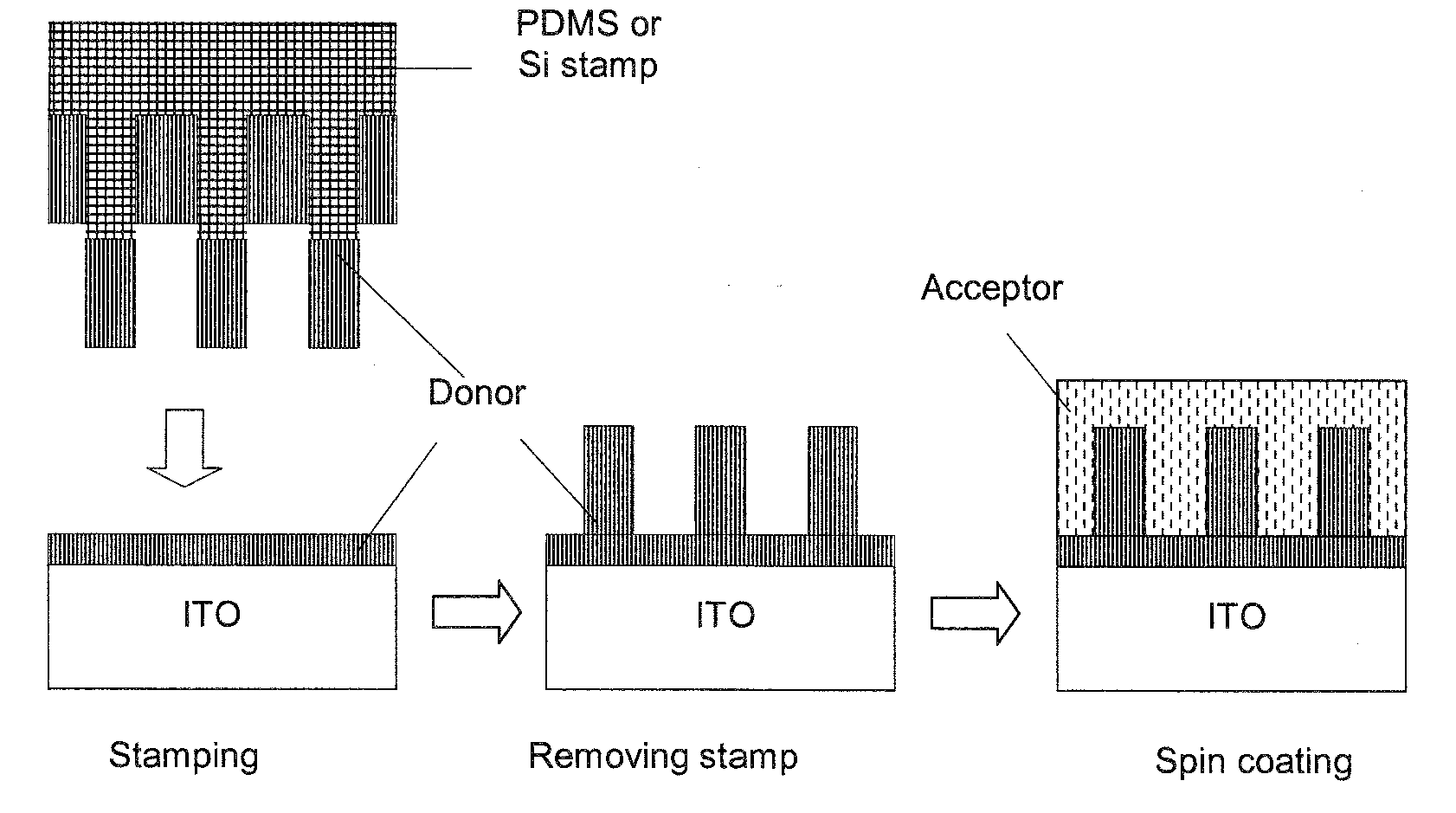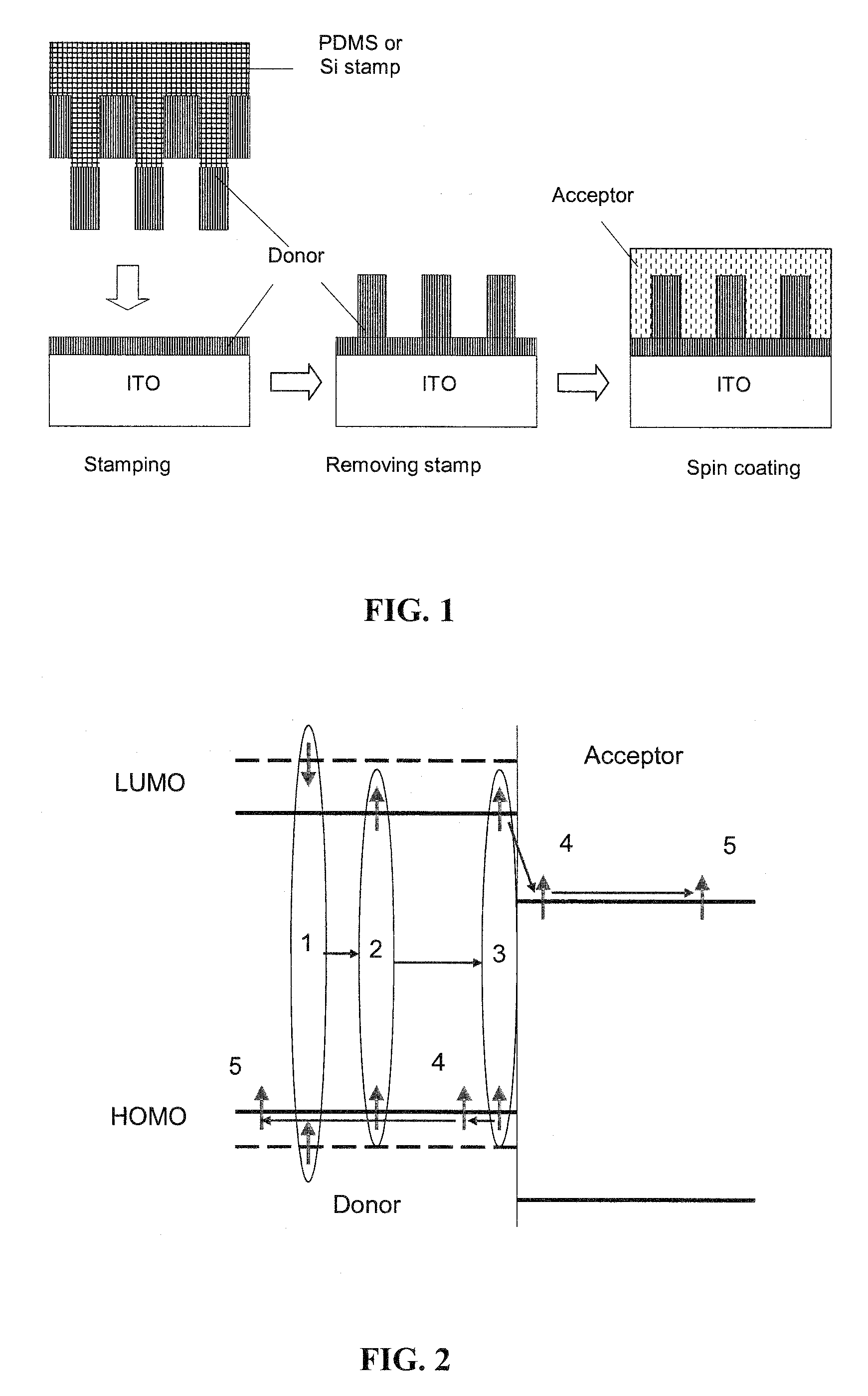Method and Apparatus for Light Absorption and Charged Carrier Transport
a technology of which is applied in the field of method and apparatus for light absorption and charge carrier transport, can solve the problems of difficult to find or synthesize organic solar cells suitable materials, low efficiency still far below the theoretical limit, and sub>60/sub> is not a very strong absorber of light with wavelength longer than 530 nm
- Summary
- Abstract
- Description
- Claims
- Application Information
AI Technical Summary
Problems solved by technology
Method used
Image
Examples
Embodiment Construction
[0013]Embodiments of the invention pertain to the use of alloyed semiconductor nanocrystals for use in solar cells. The use of alloyed semiconductor nanocrystals offers materials that have a flexible stoichiometry. The alloyed semiconductor may be a ternary semiconductor alloy, such as AxB1-xC or AB1-yCy, or a quaternary semiconductor alloy, such as AxByC1-x-yD, AxB1-xCyD1-y or ABxCyD1-x-y (where A, B, C, and D are different elements). In general, alloys with more than four elements can be used as well, although it can be much harder to control the synthesis and quality of such materials. Ternary and quaternary semiconductor alloys can be formed from, but not limited to, II-VI, III-V, and I-VII compound semiconductors. Examples of such ternary alloys include, but are not limited to, ZnxCd1-xSe, CdSeyTe1-y, PbxCd1-xSe, InxGa1-xAs, and InAs1-yPy, where 02 compound semiconductors. Examples of such quaternary alloys include, but are not limited to, Cu(InxGa1-x)Se2, Cu(InxGa1-x)S2, and C...
PUM
 Login to View More
Login to View More Abstract
Description
Claims
Application Information
 Login to View More
Login to View More - R&D
- Intellectual Property
- Life Sciences
- Materials
- Tech Scout
- Unparalleled Data Quality
- Higher Quality Content
- 60% Fewer Hallucinations
Browse by: Latest US Patents, China's latest patents, Technical Efficacy Thesaurus, Application Domain, Technology Topic, Popular Technical Reports.
© 2025 PatSnap. All rights reserved.Legal|Privacy policy|Modern Slavery Act Transparency Statement|Sitemap|About US| Contact US: help@patsnap.com


